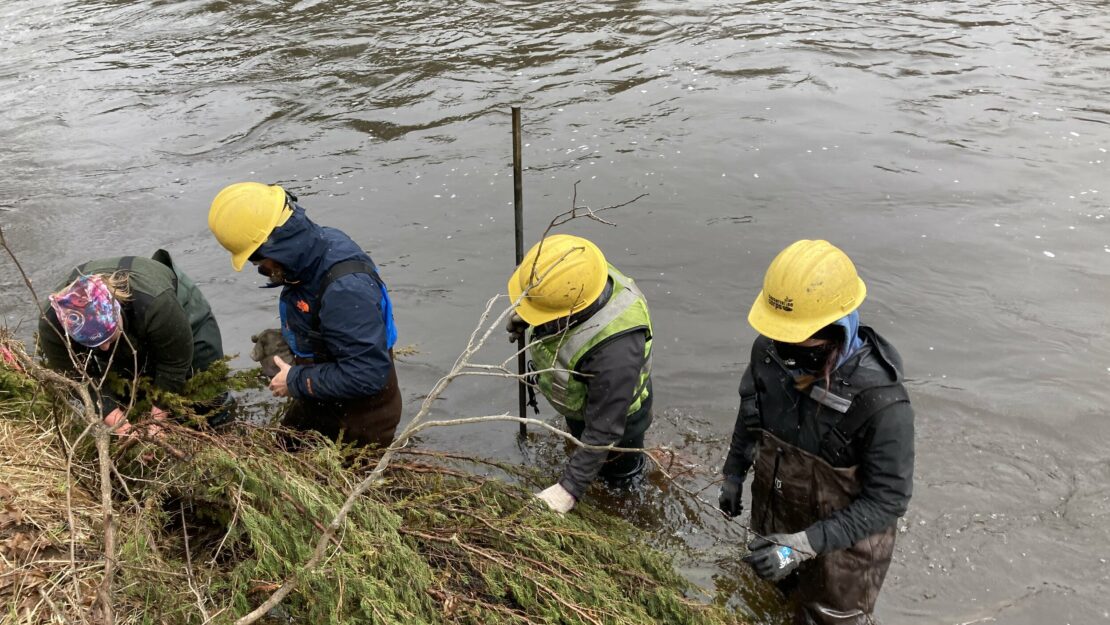Cedar Tree Revetment

by Kaia Bierman, Central District Field Crew Leader/ AmeriCorps Member
The start of the 2021 Field Crew term for the Watershed Crew was not what I anticipated. Two of us opted to deploy to Missouri with nineteen others from CCMI in a FEMA Disaster Response to assist at mass Covid-19 vaccination sites when our crew would have initially started our project year. The remaining two were split up to be temporarily fostered by other crews for the month we were gone and during our chainsaw training week. Spending the first five weeks away from each other made me wonder how long it would take to find our team flow after developing working habits in different crews and two of us not yet getting field experience that term. As it turned out, it didn’t really matter.
For our first project week, we jumped headfirst into the cold water of the Rum River to install Cedar Tree Revetments in an ongoing project with the Anoka Soil and Water Conservation District. A bioengineered solution to resist the erosion of the riverbank, tree revetments excite me about the potential of addressing environmental issues with natural solutions. The wood of Cedar is rot-resistant, making it an optimal candidate for long-term placement. The dense trunk and branches repel the full force of the water’s current, providing a chance for sediment to deposit and revegetation to occur. The Cedars hold their own for 10 years, giving time for the banks to restabilize. The thicket of the tree also provides habitat for wildlife and improves water quality over time.
As a project with comprehensible and tangible results, this was rewarding every step of the way. We would pull the 6 ft Cedars down the bank and into the river, sift it against the current to overlap the previous tree in a shingled fashion. We tied the trunks of the trees together with horseshoe clamps, looping the anchor into the steel wire, and ratcheting the clamp as tight as we could and then placing the anchor at the toe of the bank, sometimes extending our arms into the water shoulder deep. Then we placed the driving rod into the anchor which we beat into the bank with a post-pounder until the trunks were secure against our tugging.
We anchored 64 trees in 4 days, in the setting of 40-degree weather. At one point while we stood hip-deep in the river, snow flurried down around us. I’m impressed by my crew’s endurance through this cold, wet project. Everyone was focused and eager to try out each task and took ownership of the work. While there were moments we gave knowing looks of mutual discomfort as our waiters filled with chilled water, we powered through and surpassed our goal. Not bad for the first week. I can’t wait to see what else this crew achieves in the next 7 months.
